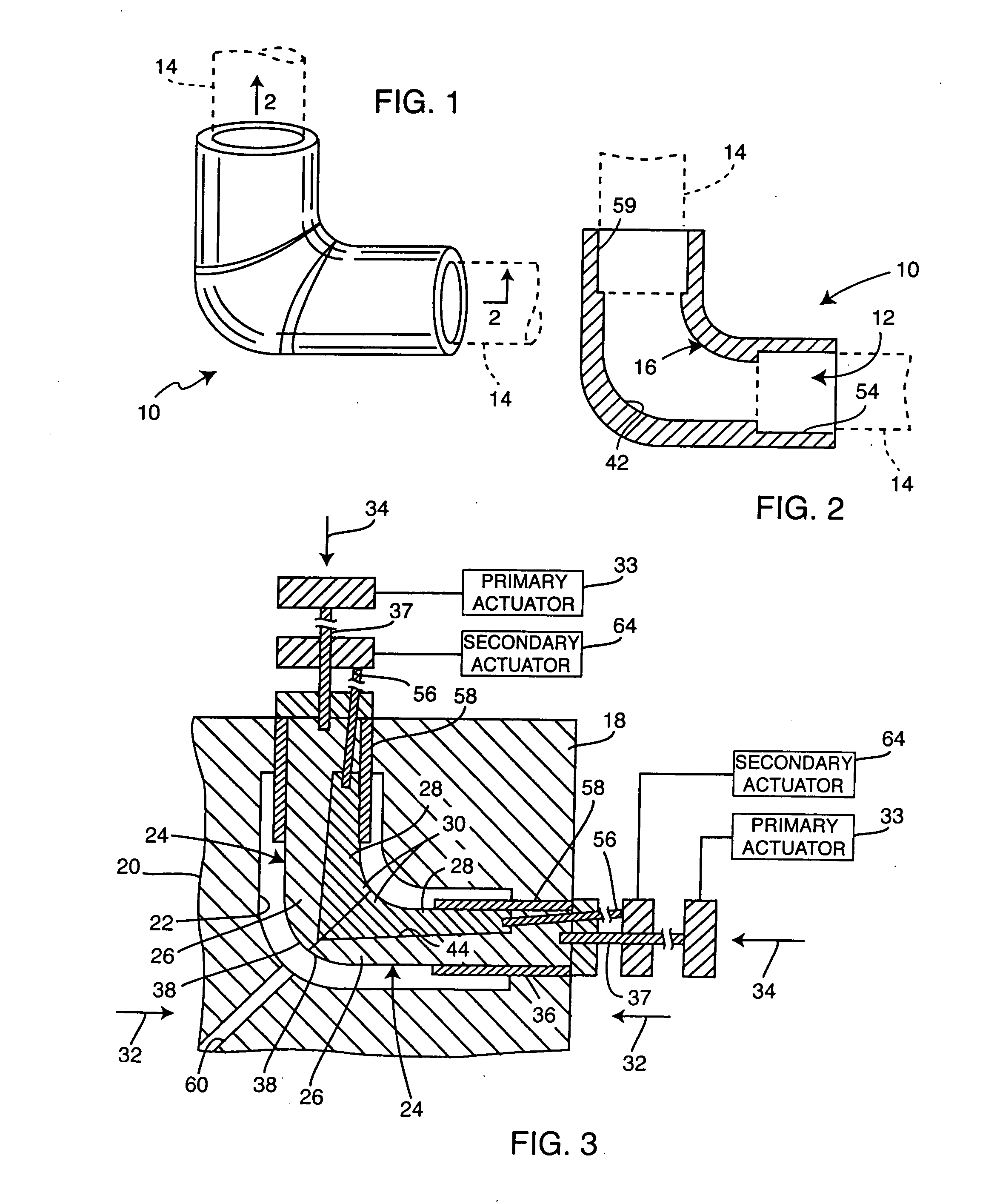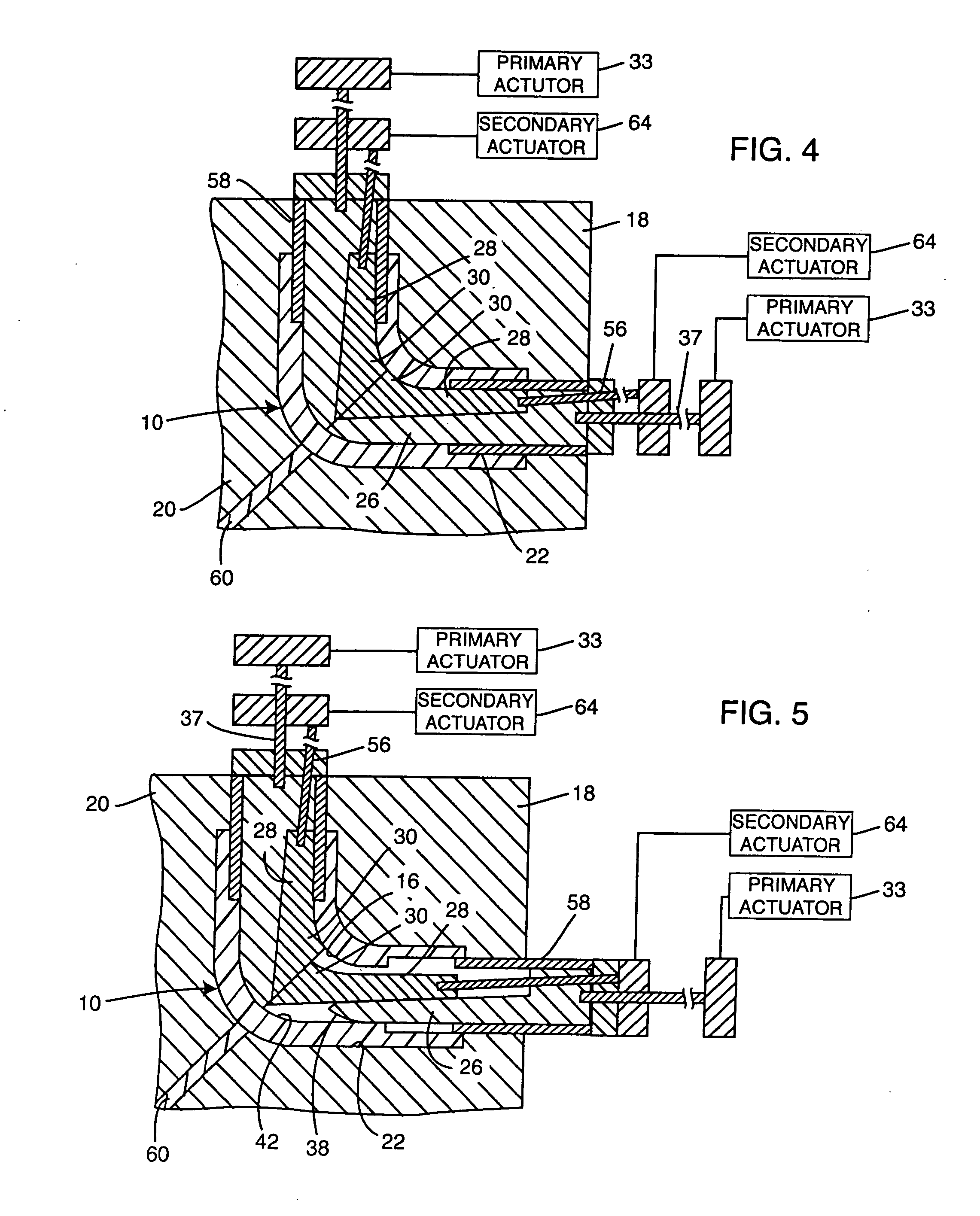Molded plastic elbow
a molded plastic and elbow technology, applied in the direction of bends, manufacturing tools, food shaping, etc., can solve the problems of hydraulic pressure loss, adversely restricting the terrain area which can be effectively irrigated, and affecting the effect of irrigation,
- Summary
- Abstract
- Description
- Claims
- Application Information
AI Technical Summary
Benefits of technology
Problems solved by technology
Method used
Image
Examples
Embodiment Construction
[0023] As shown in the exemplary drawings, the present invention relates to an improved molded plastic elbow, in this instance a new and improved molded plastic elbow fitting referred to generally in the accompanying drawings by the reference numeral 10, and a related molding assembly and method for producing the improved elbow and fitting. As shown in FIGS. 1 and 2, the elbow fitting 10 comprises a unitary or one-piece tubular element formed from molded plastic to define an internal flow path 12 (FIG. 2) having a turn formed along the length thereof. The elbow fitting 10 comprises a plumbing connector for coupling fluid flow such as water or the like between a pair of pipes 14 (shown in dotted lines in FIGS. 1 and 2)
[0024] The improved elbow fitting 10 of the present invention is particularly designed to form the internal flow path 12 with a smoothly radiused inside turn, as identified by reference numeral 16 in FIG. 2. In this regard, molded plastic elbow fittings of this general...
PUM
| Property | Measurement | Unit |
|---|---|---|
| angle | aaaaa | aaaaa |
| angle | aaaaa | aaaaa |
| length | aaaaa | aaaaa |
Abstract
Description
Claims
Application Information
 Login to View More
Login to View More - R&D
- Intellectual Property
- Life Sciences
- Materials
- Tech Scout
- Unparalleled Data Quality
- Higher Quality Content
- 60% Fewer Hallucinations
Browse by: Latest US Patents, China's latest patents, Technical Efficacy Thesaurus, Application Domain, Technology Topic, Popular Technical Reports.
© 2025 PatSnap. All rights reserved.Legal|Privacy policy|Modern Slavery Act Transparency Statement|Sitemap|About US| Contact US: help@patsnap.com



